 Ecco a me non piace parlare e scrivere di delusioni però quando mi capita di spendere 20 euro per un vino australiano da cantina di pregio ( D’Arenberg Wines ) in un ipermercato tedesco (il nuovissimo FamilaCenter di Oldenburg, con tanto di giochi d’acqua indoor e bistrot d’alta classe) e quasi non riesco a leggere il nome del vino perchè è coperto da 30 adesivi di premi vinti nel mondo (tra cui Decanter Gold Award, Royal Sydney Show, IWC), ecco non ce la faccio a stare zitto!
Ecco a me non piace parlare e scrivere di delusioni però quando mi capita di spendere 20 euro per un vino australiano da cantina di pregio ( D’Arenberg Wines ) in un ipermercato tedesco (il nuovissimo FamilaCenter di Oldenburg, con tanto di giochi d’acqua indoor e bistrot d’alta classe) e quasi non riesco a leggere il nome del vino perchè è coperto da 30 adesivi di premi vinti nel mondo (tra cui Decanter Gold Award, Royal Sydney Show, IWC), ecco non ce la faccio a stare zitto!
Per di più il mio attuale compagno di studi Tom Stevenson definisce questo vino “succoso ed entusiasmante, persistenze e raffinato”…Allora non è che sia cattivo ovviamente ma avete presente quelle “hedonistic fruit bombs” di cui parlava giorni fa Dr Vino? Ecco, uno di quelli…
Colore scurissimo da marmellata di mora, consistenza sciropposa, intensità impressionante di profumi dalle mille sfaccettature, ovvero mora, mirtillo, mela caramellata, poi spezie a non finire, cannella vaniglia balsamico mentolato, anice stellato, cuoio, cioccolato, rabarbaro, liquirizia…
In bocca è cremoso, denso persistente abbastanza caldo ma fresco, morbido avvolgente e pochissimo tannico. Insomma il classico vino cui è impossibile (usando una scheda qualsiasi) dare meno di 95 punti!
Il problema è che è stucchevole da morire, l’acidità è palesemente aggiunta con aspirina o roba simile, il frutto è stramaturo, il legno si sente parecchio e il tannino (per i miei gusti) inesistente lo rendono non solo sgradevole da bere da solo ma pure impossibile da abbinare. Magari è uno di quei vin che l?Unione Europea sogna di veder nascere ovunque in Europa dopo la geniale pseudo riforma del mercato vinicolo ma come presagio è nient’affatto buono!
Mi ha ricordato negli aspetti positivi il nostro Castello del Terriccio a base Syrah e Petit Verdot ma laddove quello è stuzzicante e pepato, questo è piatto e pesante.
Insomma se l’Australia dei grandi vini è questa, allora stiamo tranquilli altri 20 anni almeno!
 Invece sull’atro scaffale dell’ipermercato, tra i vini cheap, ho trovato sempre della stessa cantina un interessantissimo bianco fatto da Riesling Sauvignon Blanc e Marsanne che era davvero buono!
Invece sull’atro scaffale dell’ipermercato, tra i vini cheap, ho trovato sempre della stessa cantina un interessantissimo bianco fatto da Riesling Sauvignon Blanc e Marsanne che era davvero buono!
Voglio dire niente di eccezionale ma fresco vivace sapidino con note di pesca, salvia, albicocca, leggero fumè e nota mandorlata in chiusura. Gusto molto corto ma per 7 euro almeno in Toscana di vini così non se ne trovano!
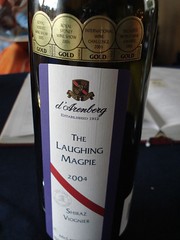
I’m not used to express my disappoint about bad wine experiences but in this case I can’t pay no heed to the fact. I spent 20 € for a prestigious Australian wine ( D’Arenberg Wines ) in a German Superstore (the new FamilaCenter in Oldenburg, with water plays and high-class bistros) but I could barely read the wine name on the label because it was covered by the sticks of at least 30 awards gained around the world (such as Decanter Gold Award, Royal Sydney Show, IWC )…well I can’t keep silent anymore!
Tom Stevenson, my current study-mate defined this wine “juicy, exciting, persistent and sophisticated”…
Well, in my opinion it’s a good wine too, but do you remember the “hedonistic fruit bombs” quoted by Dr Vino some days ago? Well, it’s something like this…
Very dark colour like blackberry jam, syrupy body , incredible endless flavours such as blackberry, blueberry, candy apple and spices, cinnamon, vanilla, balsamic mint, star anise, leather, chocolate, rhubarb and liquorice…
In the mouth is creamy, persistent and intense quite warm but fresh, soft and a few tannic.
Well, it’s impossible to award it (using a common chart )less than 95 points! But the real issue is that this wine is really nauseating: the acidity is artificially added through aspirin or something like this, too much fruity (ripe fruits) and oaky, no tannic at all (in my opinion). This wine is not only unpleasant to drink but also to match.
In it’s positive features I can compared it to our Castello del Terriccio made of Syrah and Petit Verdot, but while this one is appealing and spicy, the other one is really anonymous and heavy.
Well if this is an example of Australian great wine we can sleep easy the next 20 year at least!
On the same shelf I found another cheap wine of the same producer , an interesting white wine, a blend of Riesling Sauvignon Blanc and Marsanne, really good!
It is not a special wine but fresh, lively and salty , it shows peach, sage and apricot aromas, light fumé, a note of almond at the end. Really short taste but believe me when I say that it’s hard to find out this kind of wine paying 7 €, in Tuscany.
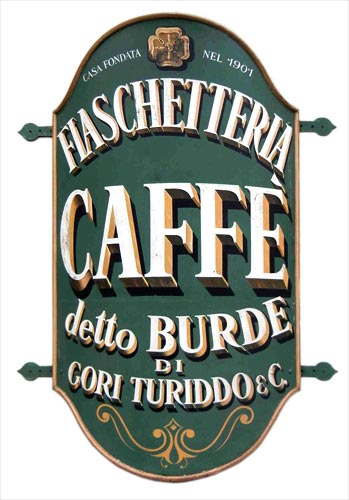
 Sempre tra i miei assaggi natalizi di studio ecco invece una graditissima sorpresa portoghese dalla semisconosciuta regione di Obidos e dal vitigno ignoratissimo Periquita (aka Carinena).
Sempre tra i miei assaggi natalizi di studio ecco invece una graditissima sorpresa portoghese dalla semisconosciuta regione di Obidos e dal vitigno ignoratissimo Periquita (aka Carinena).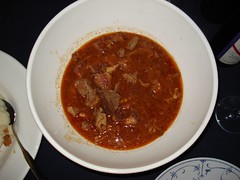
 Thanks to my “European family” every year at Christmas I spend most of my time in the lounge areas of the airports. This is the occasion to take a look to all magazines and newspapers that usually I don’t succeed to read, moreover in this period you can find out a lot of forecasts for the coming year and also some scoops. This year on USA Today and Financial Times find out some interesting but also worrying ideas. According to Marshal Cohen of NPD Group, on USA Today (full article here), the consumers would rather to read professional articles made up by experts and not by simple passionate bloggers, Cohen declares that the “blog category” is out and that it will survive only just like a “private spaces” to express personal opinions. He explains that “The average person may well be shouting ‘I want a say,’ but that’s created an absence of legitimacy on the Web”. It should bean interesting issue but then he suggests that the legitimacy on web “maybe it’ll be Oprah, or maybe it’s Consumer Reports” . On the Italian scenery, for instance it could be the same among Tombolini and BlogFood spaces. It seems that the legitimacy and the authority to take part of the “blogosphere” will be one of the most important issue in the next future. The same article, focused on “Getting real” , debases blogs while praising and amplifying social networks such as Myspace and Facebook (well, this is clearly the American prospective, in fact it seems that in US everyone got a Facebook account)…well, what about chatting with granny on MySpace or Facebook about dinner plans? Interesting but unreal (at least for the next 10 years). Fortunately the article ends with a positive estimates for food, beverage and leisure sector, indeed according to Usa Today the consumers, in spite of terrorism and social matters, will spend 2008 in “eating more red meat, drinking, smoking” , deferring their repentance until 2009. What’s important (and really negative) in my opinion is that in the USA the official press considers “blogs phenomenon” with suspect. However two different policies are adopted, in fact, while some press offers to users an online space to blog, others are intended to run down the blog role, ridiculing their function and contents. In this case I totally agree with Luca Conti of Pandemia and it’s smart post about blogosphere and American online press. Well I don’t mean that blogs will change the world, but they’re part of an important process for information fruition, that will be run by giants such as Google, Yahoo and others, leaving behind the current information providers. In the future the reading of traditional press will certainly inspire interesting conversations but to get exact information and advices we will search somewhere else. As the digital music is slowly tearing down the traditional music industry, it will be the same for the information system, if it won’t adequate. Just to be clear I don’t have any idea or proposal about the news presentation in the immediate future but in my opinion more like this
Thanks to my “European family” every year at Christmas I spend most of my time in the lounge areas of the airports. This is the occasion to take a look to all magazines and newspapers that usually I don’t succeed to read, moreover in this period you can find out a lot of forecasts for the coming year and also some scoops. This year on USA Today and Financial Times find out some interesting but also worrying ideas. According to Marshal Cohen of NPD Group, on USA Today (full article here), the consumers would rather to read professional articles made up by experts and not by simple passionate bloggers, Cohen declares that the “blog category” is out and that it will survive only just like a “private spaces” to express personal opinions. He explains that “The average person may well be shouting ‘I want a say,’ but that’s created an absence of legitimacy on the Web”. It should bean interesting issue but then he suggests that the legitimacy on web “maybe it’ll be Oprah, or maybe it’s Consumer Reports” . On the Italian scenery, for instance it could be the same among Tombolini and BlogFood spaces. It seems that the legitimacy and the authority to take part of the “blogosphere” will be one of the most important issue in the next future. The same article, focused on “Getting real” , debases blogs while praising and amplifying social networks such as Myspace and Facebook (well, this is clearly the American prospective, in fact it seems that in US everyone got a Facebook account)…well, what about chatting with granny on MySpace or Facebook about dinner plans? Interesting but unreal (at least for the next 10 years). Fortunately the article ends with a positive estimates for food, beverage and leisure sector, indeed according to Usa Today the consumers, in spite of terrorism and social matters, will spend 2008 in “eating more red meat, drinking, smoking” , deferring their repentance until 2009. What’s important (and really negative) in my opinion is that in the USA the official press considers “blogs phenomenon” with suspect. However two different policies are adopted, in fact, while some press offers to users an online space to blog, others are intended to run down the blog role, ridiculing their function and contents. In this case I totally agree with Luca Conti of Pandemia and it’s smart post about blogosphere and American online press. Well I don’t mean that blogs will change the world, but they’re part of an important process for information fruition, that will be run by giants such as Google, Yahoo and others, leaving behind the current information providers. In the future the reading of traditional press will certainly inspire interesting conversations but to get exact information and advices we will search somewhere else. As the digital music is slowly tearing down the traditional music industry, it will be the same for the information system, if it won’t adequate. Just to be clear I don’t have any idea or proposal about the news presentation in the immediate future but in my opinion more like this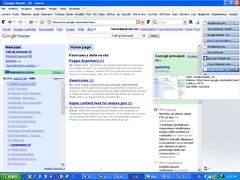

 Altra bella sorpresa questa bottiglia che l’enotecaro di Oldenburg è stato felicissimo di vendermi…E chi volete che si compri ‘sto vino greco del 2003?
Altra bella sorpresa questa bottiglia che l’enotecaro di Oldenburg è stato felicissimo di vendermi…E chi volete che si compri ‘sto vino greco del 2003?  Ecco a me non piace parlare e scrivere di delusioni però quando mi capita di spendere 20 euro per un vino australiano da cantina di pregio (
Ecco a me non piace parlare e scrivere di delusioni però quando mi capita di spendere 20 euro per un vino australiano da cantina di pregio (  Invece sull’atro scaffale dell’ipermercato, tra i vini cheap, ho trovato sempre della stessa cantina un interessantissimo bianco fatto da Riesling Sauvignon Blanc e Marsanne che era davvero buono!
Invece sull’atro scaffale dell’ipermercato, tra i vini cheap, ho trovato sempre della stessa cantina un interessantissimo bianco fatto da Riesling Sauvignon Blanc e Marsanne che era davvero buono!
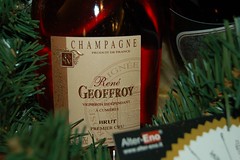
 Difficilmente mi capita di bere vini Cavit e difficilmente li raccomando però c’è da dire che quando le dimensioni aziendali raggiungono questi dimensioni si ottengono delle possibilità di comunicazione interessante. Ed interessante è quando queste grandi aziende spendono in progetti utili alla sommellerie in generale. Vi ricordate l’annoso problema del vino sulla pizza?
Difficilmente mi capita di bere vini Cavit e difficilmente li raccomando però c’è da dire che quando le dimensioni aziendali raggiungono questi dimensioni si ottengono delle possibilità di comunicazione interessante. Ed interessante è quando queste grandi aziende spendono in progetti utili alla sommellerie in generale. Vi ricordate l’annoso problema del vino sulla pizza?

 Sapete che ho un debole per le iniziative di
Sapete che ho un debole per le iniziative di 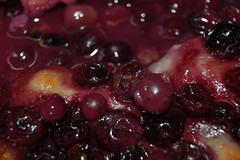 Nonostante le guide non amino i nostri dolci e ci facciano con solerzia notare che non sono molto vari, almeno quelli che ci sono “pare” che siano di livello…Non bastasse la Torta di mele cui molti sono affezionatissimi, in questa stagione sembra che una delle più grandi prelibatezze dolci fiorentine sia proprio la nostra
Nonostante le guide non amino i nostri dolci e ci facciano con solerzia notare che non sono molto vari, almeno quelli che ci sono “pare” che siano di livello…Non bastasse la Torta di mele cui molti sono affezionatissimi, in questa stagione sembra che una delle più grandi prelibatezze dolci fiorentine sia proprio la nostra 